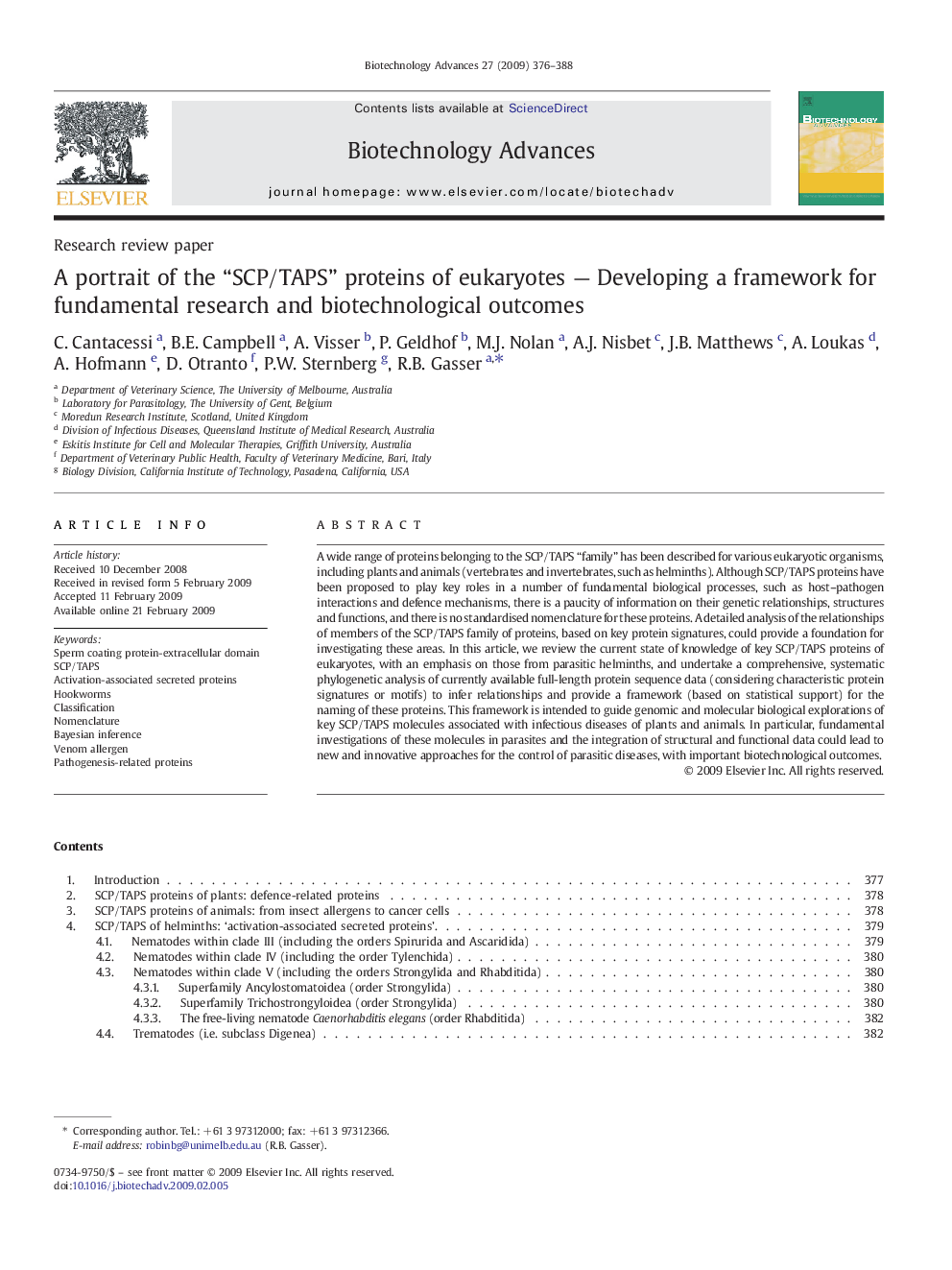| Article ID | Journal | Published Year | Pages | File Type |
|---|---|---|---|---|
| 14501 | Biotechnology Advances | 2009 | 13 Pages |
A wide range of proteins belonging to the SCP/TAPS “family” has been described for various eukaryotic organisms, including plants and animals (vertebrates and invertebrates, such as helminths). Although SCP/TAPS proteins have been proposed to play key roles in a number of fundamental biological processes, such as host–pathogen interactions and defence mechanisms, there is a paucity of information on their genetic relationships, structures and functions, and there is no standardised nomenclature for these proteins. A detailed analysis of the relationships of members of the SCP/TAPS family of proteins, based on key protein signatures, could provide a foundation for investigating these areas. In this article, we review the current state of knowledge of key SCP/TAPS proteins of eukaryotes, with an emphasis on those from parasitic helminths, and undertake a comprehensive, systematic phylogenetic analysis of currently available full-length protein sequence data (considering characteristic protein signatures or motifs) to infer relationships and provide a framework (based on statistical support) for the naming of these proteins. This framework is intended to guide genomic and molecular biological explorations of key SCP/TAPS molecules associated with infectious diseases of plants and animals. In particular, fundamental investigations of these molecules in parasites and the integration of structural and functional data could lead to new and innovative approaches for the control of parasitic diseases, with important biotechnological outcomes.
